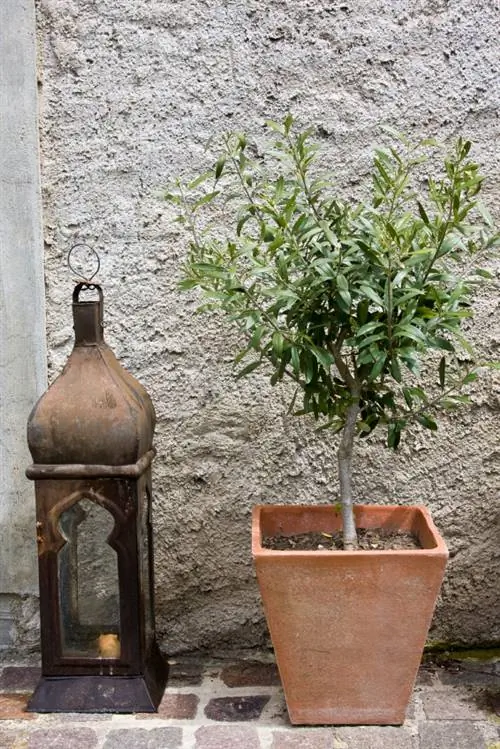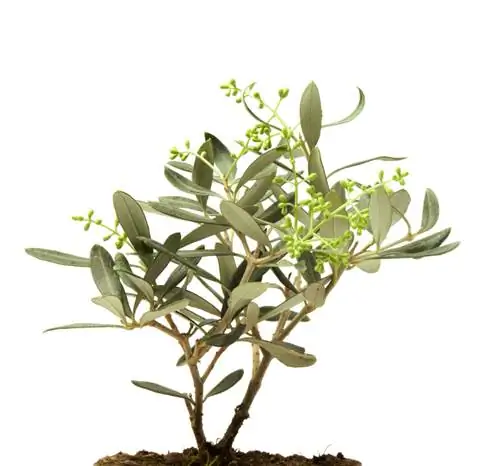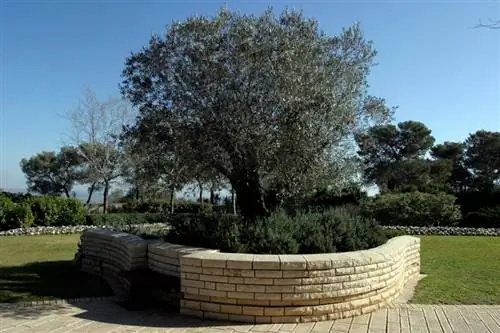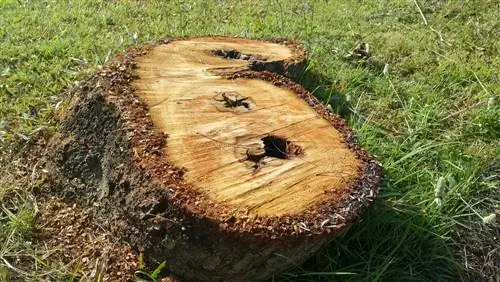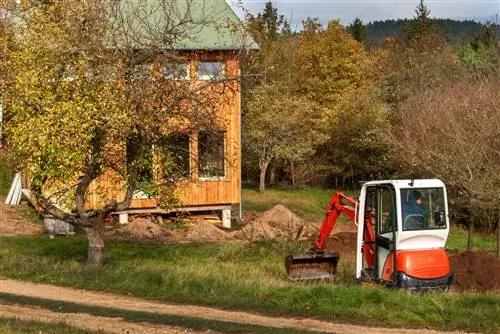- Author admin [email protected].
- Public 2023-12-16 16:46.
- Last modified 2025-01-23 11:19.
Olive trees planted outdoors are a rare sight in Germany - for good reason, because the German winter is simply too frosty for the Mediterranean plant. However, in regions with a milder climate, free-range farming is certainly possible.
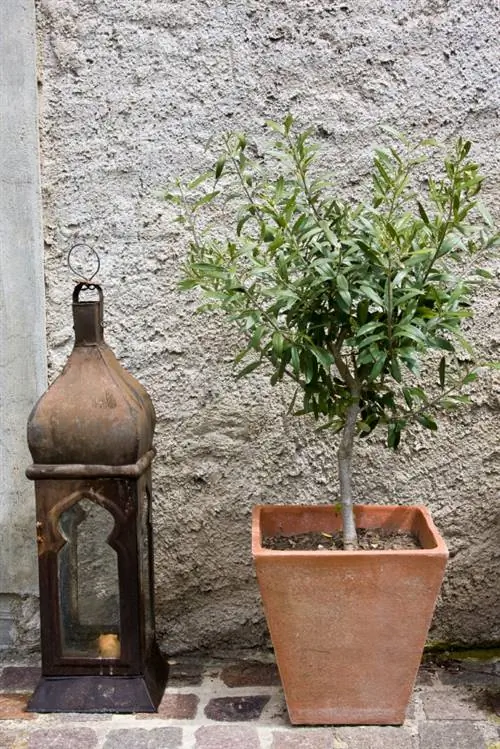
How can you plant an olive tree in Germany?
To plant an olive tree in Germany, choose a protected, full-sun location and robust varieties such as Leccino, Coratina or Picual. Make sure there is enough space, drainage and frost-free conditions, especially in wine-growing regions such as the Moselle or Rheingau.
Choose the right location
In harsh northern Germany or in the cold Alpine region, an olive tree planted in the garden will most likely not feel particularly comfortable and will die after a cold winter. Only in some wine-growing regions (e.g. on the Moselle or in the Rheingau) are the climatic conditions mild enough to attempt such an attempt. However, before you start planting, you should first choose the right location.
- Olives need a lot of space: you should keep at least seven meters away from the nearest plantings
- the roots should always be kept free of growth
- Olives need a location that is as full of sun and sheltered from the wind as possible (no drafts!)
Choosing the right variety
Not every olive variety is suitable for planting in German gardens. It is advisable to choose robust and winter-hardy varieties that also grew up in a similarly harsh climate. Olive trees from Spain or southern Italy are not suitable for this because they are not hardy enough. However, through years of habituation, you can train your olive tree to be more hardy. Only young trees should not be planted out yet, as they are much more sensitive than older specimens.
Olive varieties suitable for planting
- Leccino (Italy)
- Coratina (Italy)
- Ascolana (Italy)
- Alandaou (France)
- Arbequina (France)
- Bouteillan (France)
- or Picual (Spain)
Planting an olive tree
To plant out, you should dig a large planting hole at the selected location that is about twice as deep as the root ball and at least a third wider. For adequate drainage, pebbles or pottery shards can be used as the bottom layer; these are intended to prevent the formation of waterlogging. If you have loose, sandy soil to begin with, this measure is not necessary. However, if your soil conditions are not optimal, enlarge the planting hole and fill it with a suitable substrate mixture (€11.00 on Amazon) (sand and standard potting soil in a ratio of 1:1). The root ball should be completely covered with soil, and a support for the tree in the form of a stick is advisable. After planting, water your tree thoroughly so that it grows more easily.
Tips & Tricks
Planted olive trees - in contrast to potted plants - basically do not need to be watered because the plants get enough water from rain and moisture in the soil. Additional watering is only necessary in very dry periods.

